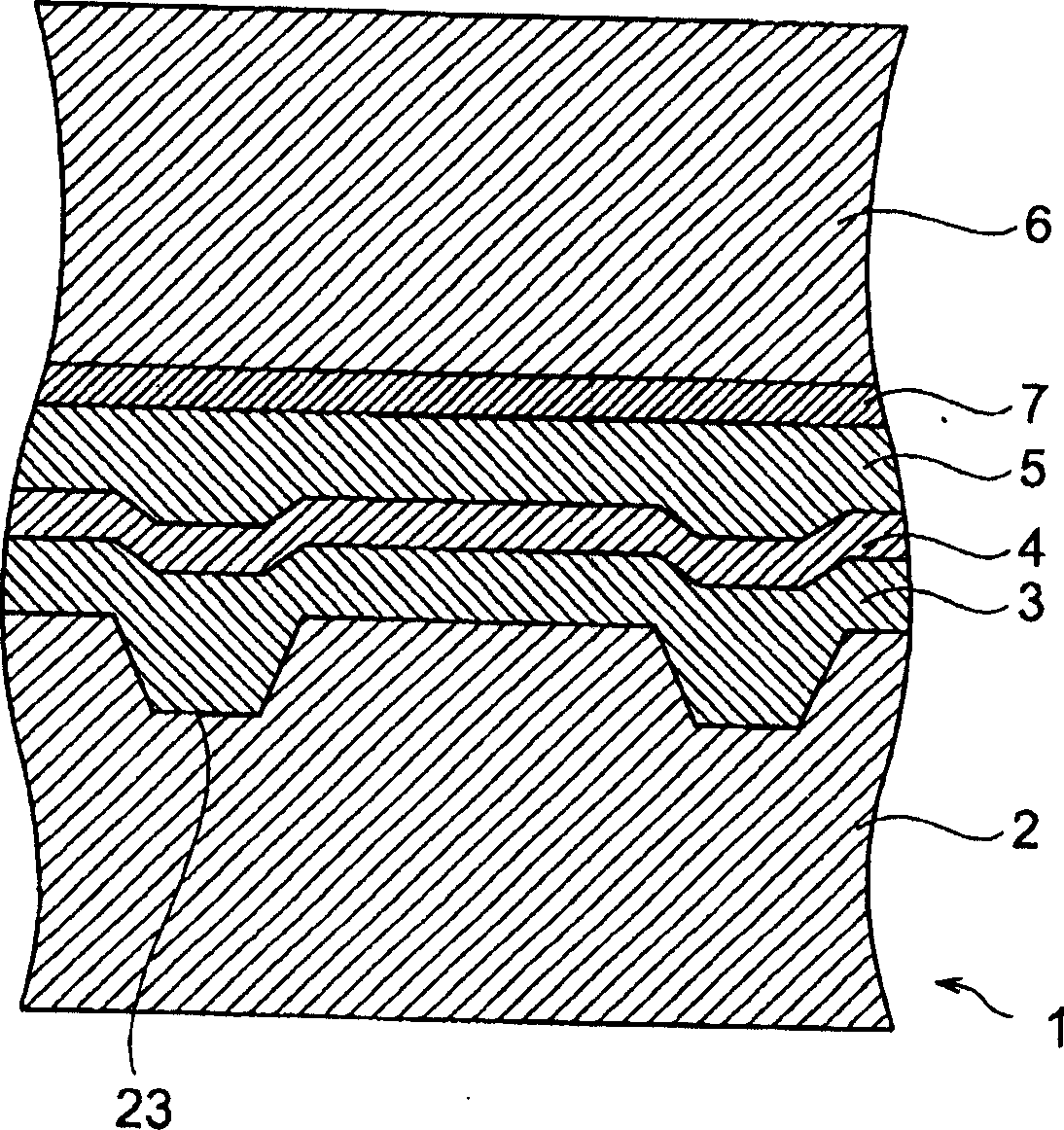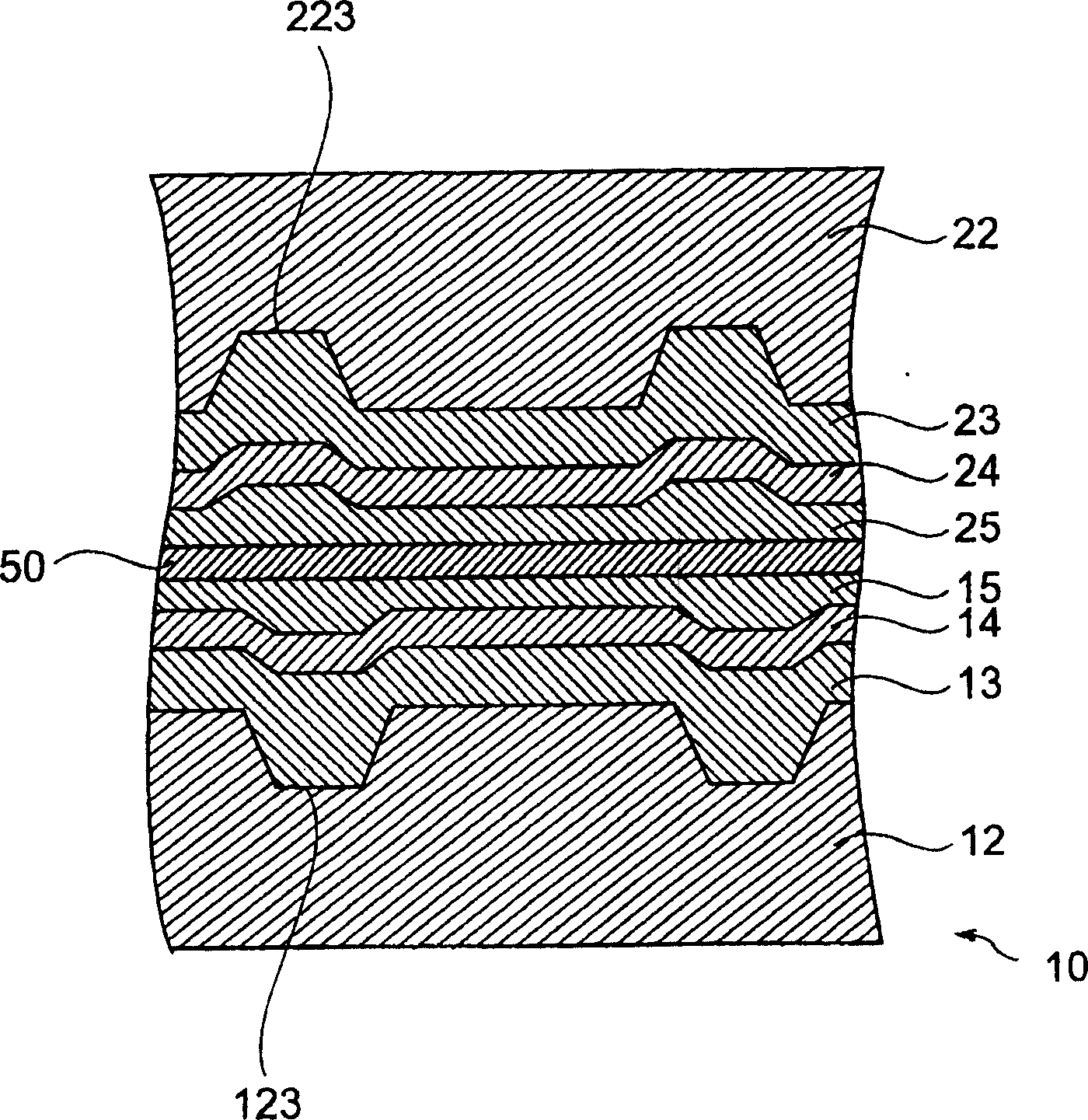Optical recording materials and optical recording media
An optical recording medium and optical recording technology, applied in the direction of optical record carrier, record carrier material, temperature recording method, etc., can solve the problem of short wavelength of reproduced light, and achieve the effect of satisfying sensitivity and beating requirements, high recording speed, and restraining beating
- Summary
- Abstract
- Description
- Claims
- Application Information
AI Technical Summary
Problems solved by technology
Method used
Image
Examples
Embodiment 1
[0108] On the one hand, on a polycarbonate resin substrate with a depth of 0.16 μm, a width of 0.30 μm, and a groove pitch of 0.74 μm, the trimethylcyanine pigment formed with the trimethylcyanine pigment cation and its counter anion and A chelate compound, an optical recording material prepared by mixing the combinations and ratios shown in Table 17, is dissolved in 2,2,3,3-tetrafluoropropanol at a ratio of 1.0% by weight to form a mixed solution , coated on a polycarbonate resin substrate, dried to form a recording layer (thickness 130nm). Then, an Ag reflective layer (thickness 85 nm) was formed on the recording layer by sputtering, and a transparent protective layer (thickness 5 μm) made of ultraviolet curable acrylic resin was formed on the Ag reflective layer to obtain a laminated structure. Then, these two laminated structures are bonded together with an adhesive so that their respective protective layers are on the inside to form a figure 2 The optical recording disc...
Embodiment 2~22 and comparative example 1~7
[0111] The preparation and evaluation of optical recording discs were carried out in the same manner as in Example 1, except that materials mixed in combinations and ratios shown in Table 17 were used. In addition, the Nos. of the trimethylcyanine dye cation and the chelate compound used in the optical recording material are those shown in Tables 1 to 6 and Tables 7 to 12 and their corresponding chemical structural formulas, respectively. in PF 6 - is the counter anion of the trimethylcyanine pigment cation, with Na + It is the balance cation of the chelate. Table 18 with " * 1" or " * The example of 2" indicates that an optical recording material was prepared by using a salt (integrated salt) of a trimethylcyanine dye cation and a chelate complex as follows. In addition, in Comparative Examples 5, 6, and 7, trimethylcyanine was used. The cyanine pigment cation is R in the formula (1a) 1 , R 2 , R 3 , R 4 Comparative compounds A and B represented by the following form...
Embodiment 23
[0119] On the one hand, a polycarbonate resin substrate with a depth of 0.16 μm, a width of 0.30 μm, and a groove pitch of 0.74 μm is formed on a polycarbonate resin substrate. 6 - The formed trimethylcyanine dye and additives were mixed according to the combinations shown in Table 19, and the content ratio of the additive compound was prepared at a ratio of 10% by weight based on the entire optical recording material, and the content was adjusted to 1.0 It was dissolved in 2,2,3,3-tetrafluoropropanol at a weight % ratio to form a mixed liquid, coated on a polycarbonate resin substrate, and dried to form a recording layer (thickness: 130 nm). Then, an Ag reflective layer (thickness 85 nm) was formed on the recording layer by sputtering, and a transparent protective layer (thickness 5 μm) made of ultraviolet curable acrylic resin was formed on the Ag reflective layer to obtain a laminated structure. Then, these two laminated structures are bonded together with an adhesive so t...
PUM
| Property | Measurement | Unit |
|---|---|---|
| Thickness | aaaaa | aaaaa |
| Thickness | aaaaa | aaaaa |
| Thickness | aaaaa | aaaaa |
Abstract
Description
Claims
Application Information
 Login to View More
Login to View More - R&D Engineer
- R&D Manager
- IP Professional
- Industry Leading Data Capabilities
- Powerful AI technology
- Patent DNA Extraction
Browse by: Latest US Patents, China's latest patents, Technical Efficacy Thesaurus, Application Domain, Technology Topic, Popular Technical Reports.
© 2024 PatSnap. All rights reserved.Legal|Privacy policy|Modern Slavery Act Transparency Statement|Sitemap|About US| Contact US: help@patsnap.com










